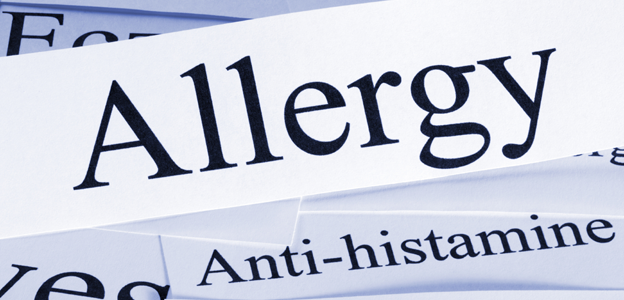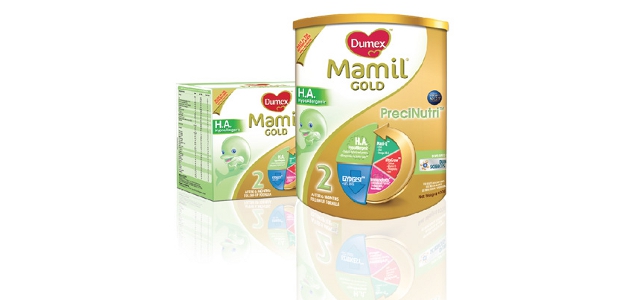SingaporeMotherhood | Baby & Toddler
December 2012
Feeding Baby Well, if Mummy has Allergies

Is my Baby at Risk of Allergies?
“I am in my last trimester of pregnancy and have had multiple allergies since young. How, as a mother, can I play a role to help reduce the risk of allergies in my baby? During breastfeeding for the first 6 months, do I need to avoid certain foods that can lessen my baby’s chances of developing food allergies?” — Mrs Angela Lim, 32 weeks pregnant.
Allergies are a global health problem and their prevalence is increasing. Approximately 4-5%* of school children in Singapore may have food allergies. On an average, there is already a 5-15% risk that your baby may develop allergies over time. Babies are more likely to develop allergies if there is a history of eczema, asthma, or food allergies (known together as atopy) in the family.
Here is what a mum needs to know about Allergies.
* Information from “A Patient’s Guide to Understanding Food Allergies” Health Promotion Board (2012)
[banner][/banner]
What is an allergy?
Food Allergy is an abnormal response to a food protein triggered by our body’s immune system.
Allergies tend to run in families so if either parent has an allergy, the child has a higher chance of getting allergies. However, some children have allergies even if no one in the family does.
Click here to do a quick one-minute Allergy Risk Quiz and find out if your baby is at risk of developing allergies. Stand a chance to win a set of Dumex bags and pouches.
How will I know my infant is at risk of allergy?
Family history
The main way of identifying an infant at risk of allergic disease is if there is a positive family history: parents or siblings – are known to have any of these allergies, known as atopic conditions.
Children are more likely to have allergies if their parents are allergic. A child with one parent who has any kind of allergy, including environmental or seasonal allergies, has a 30 per cent chance of becoming allergic. Having two allergic parents increases a child’s risk to 60 per cent.
What are the common symptoms of food allergy?
– Dry, itchy throat and tongue
– Abdominal cramps, diarrhoea, nausea and vomiting
– Swelling of lips, face, tongue, throat or other parts of body
– Throat tightness and difficulty in breathing
– Flushing, itching of the eyes, hives (red itchy bumps), rash or eczema
– Giddiness, fainting or loss of consciousness
If your baby is allergic to a certain food, signs will appear rapidly within a few minutes. While some children outgrow food allergies as they grow older, some continue to have allergy symptoms throughout their life.
What is the importance of breast feeding?
Breastfeeding is the best way to protect your baby from allergies. Exclusive breastfeeding for first 6 months of life is recommended by experts as it is the best form of nutrition for infants.
Mother’s milk contains immune factors and anti-inflammatory factors which help to protect the baby. Breastfeeding also benefits mum’s health and helps form a stronger bond between mum and baby.
Does my diet while breastfeeding influence the risk of my baby developing allergy?
There is not enough evidence to show that restricting a mother’s diet during pregnancy and breastfeeding can lower her baby’s allergy risk. You do not need to avoid specific foods while you breastfeed to prevent food allergies in your baby. Continue to follow a healthy diet when you are breastfeeding.
What is HA (Hypoallergenic) Formula?
Hypoallergenic (HA) formulas have their milk (whey) protein broken down into smaller, easy-to-digest proteins. These proteins are less likely to cause allergic reactions in babies at risk of cow’s milk protein allergy, compared to larger proteins.
To know more about Mamil® Gold H.A. with PreciNutri™ Step 2 formula click here.
Why should I use Hypoallergenic (HA) formula?
Hypoallergenic (HA) formula can be recommended for babies at risk of allergy. Using formulas based on partially hydrolysed protein offers the solution for babies at risk of cow’s milk allergy. These hydrolysates need to be of consistent high quality, meeting all safety requirements for hypo-allergenic formulas.
How is Dumex HA superior to other HA formulas?
Mamil® Gold H.A. with PreciNutri™ Step 2 is the only formula in Singapore with the benefits of partially hydrolysed protein and unique prebiotic blend. The formula contains Immunofortis™, an internationally patented Prebiotics blend (GOS, lcFOS in ratio 9:1 combination), Zinc and Iron to support your child’s natural defences.

When should I introduce complementary feeding?
After your baby is 6 months of age, introduce solid food slowly and progressively to your baby as this reduces the risk of food allergies. There are signs which tell you that your baby is ready for complementary feeding. To look out for signs of developmental readiness, click here.
On the other hand weaning should not be delayed beyond 6 months of age, as it increases the risk of feeding difficulties later on and the baby may not get adequate nutrition from milk alone.
If your baby shows any symptoms of an allergic reaction, please consult your doctor immediately.
All content from this article, including images, cannot be reproduced without credits or written permission from SingaporeMotherhood.
Follow us on Facebook, Instagram, and Telegram for the latest article and promotion updates.





